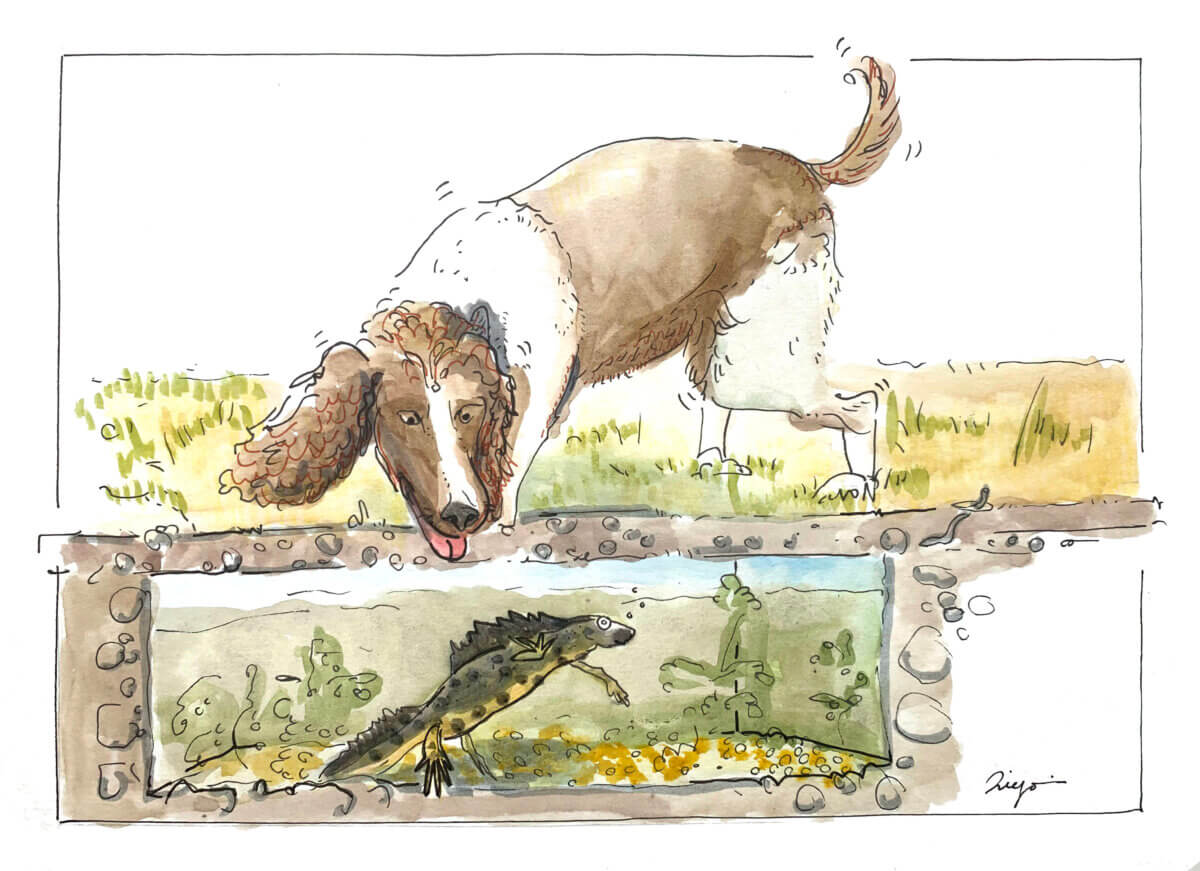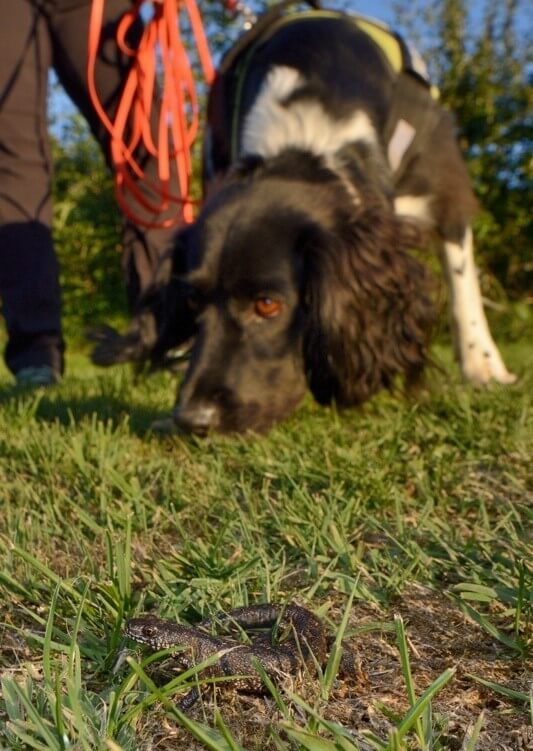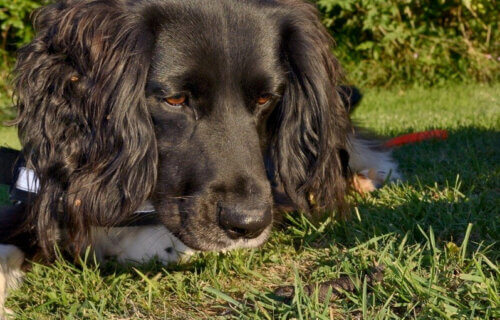SALFORD, United Kingdom — Freya, a highly-skilled sniffer dog, is leveraging her abilities to help conserve the greatly endangered great crested newts. This six-year-old English springer spaniel can detect the presence of these semi-aquatic creatures with her powerful nose, even when they’re hiding underground, according to scientists.
The great crested newt is of significant conservation concern in the United Kingdom and throughout central and northern Europe. While their aquatic life is well-understood, less is known about their land-based habits — as they tend to stay hidden underground, in mammal burrows, or rocky crevices. Their elusive nature makes it challenging to gather essential data for conservation efforts.
These newts, recognized by their black warty skin and striking orange stomach, breed in ponds and inhabit a variety of environments including woodlands, grasslands, freshwater wetlands, and farmlands. They are prevalent across lowland England and Wales. However, in recent years, their population has witnessed a significant decline. This is partially attributed to a reduction in ponds, with the U.K. losing approximately 50 percent of ponds in the 20th Century and 80 percent of current ponds considered in poor condition.

Freya was deployed to understand how environmental factors specific to great crested newts might influence their detectability. She was tested across various distances and land types — including sandy or clay soil with or without vents, common in mammal burrows.
Over 16 trial runs, Freya was able to detect great crested newts across the full range of distances, starting from two meters away. Despite two false positives during the initial trials, her overall success rate stood at an impressive 87 percent.

In both vented and unvented sandy and clay soils, she demonstrated high accuracy. Over 128 trials, she posted an 88-percent success rate, with most of the 12 percent inaccurate calls being false positives. Freya was significantly quicker at detecting great crested newts in vented soil compared to unvented soil and was notably faster and more precise in unvented clay soil than in sandy unvented soil.
Nikki Glover, the study’s author, believes that other dogs would likely need substantial training to achieve success rates comparable to Freya’s. Additionally, accuracy may also depend on the specific characteristics of the detection site.
“This pioneering research shows how detection dogs can be a valuable addition to the current toolbox used to locate threatened amphibian species, particularly those using subterranean shelters. This study also highlights how soil type can have an influence on the accuracy and speed of detection,” the study authors conclude in a media release.
The findings are published in the journal PLoS ONE.
You might also be interested in:
- Dogs trained to detect people infected with COVID-19 — by sniffing their armpits
- Dogs can sniff out cancer in blood with near-perfect accuracy, study finds
- Sixth mass extinction on Earth already underway, scientists say
South West News Service writer Alice Clifford contributed to this report.

